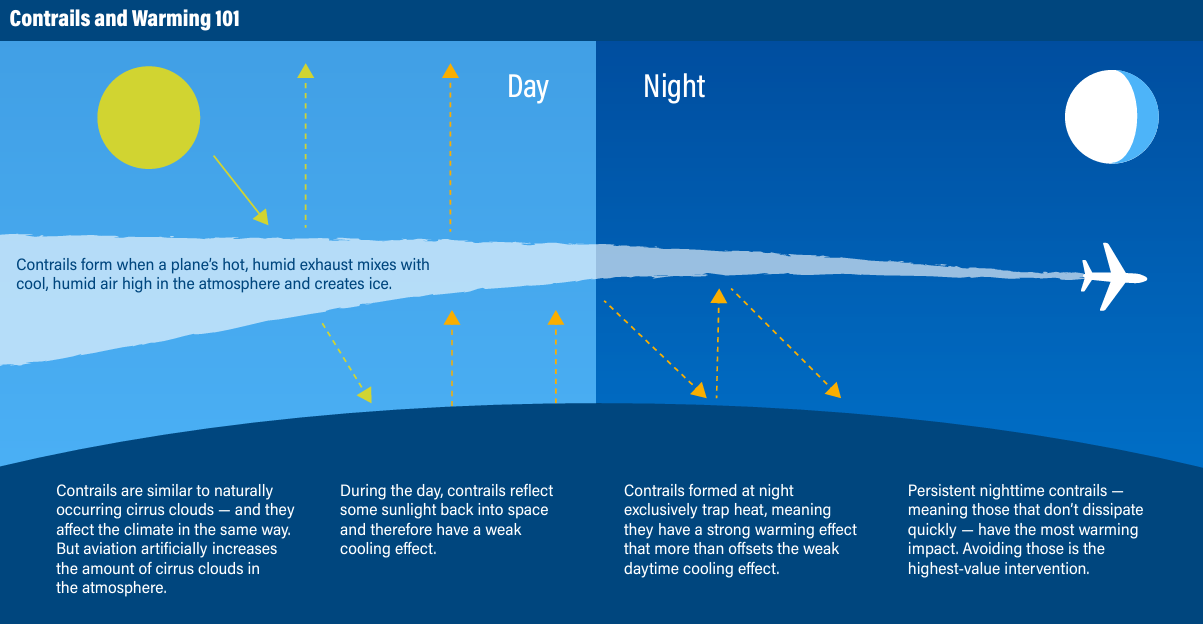Contrail Avoidance: American Airlines’ Pioneering Efforts To Reduce Aviation's Climate Impact
Rhea-AI Summary
American Airlines (AAL) has participated in a groundbreaking study led by Google Research and Breakthrough Energy to develop and test contrail avoidance methods. The innovative pilot program demonstrated a 54% reduction in contrail formation using AI and predictive mapping. Contrails may account for approximately 35% of aviation's global warming impact, according to the IPCC.
The study combined large datasets with AI to create contrail forecast maps. A small group of American Airlines pilots flew 70 flights over six months, using AI-based predictions to make minor route modifications. This initiative represents one of the first real-world proof points that commercial flights can verifiably avoid contrails, potentially offering a cost-effective and scalable climate solution for the aviation industry.
Positive
- 54% reduction in contrail formation achieved in test flights
- Potential for a cost-effective and high-impact climate intervention
- Collaboration with leading tech companies (Google Research) and climate initiatives (Breakthrough Energy)
Negative
- Additional research needed to determine if success can be replicated and scaled
- Challenges in refining the science and improving contrail forecasting models
- Potential increase in fuel use due to avoidance maneuvers
Insights
This pilot program marks a significant step in addressing aviation's climate impact. The 54% reduction in contrail formation is impressive, showcasing the potential of AI and predictive mapping in mitigating a major contributor to global warming. However, it's important to note that this is a small-scale test and scalability remains a challenge.
The study's focus on contrails, which may account for
While promising, several hurdles remain. Refining the science, improving forecasting models and balancing contrail avoidance with potential increased fuel consumption are critical next steps. The success of this initiative will largely depend on industry-wide adoption and cooperation with air traffic control authorities.
American Airlines' leadership in this contrail avoidance study positions them at the forefront of sustainable aviation efforts. This initiative aligns with growing investor and consumer focus on ESG factors, potentially enhancing the company's reputation and long-term value proposition.
The program's potential as a low-cost, high-impact climate intervention is particularly attractive from a business perspective. If scaled successfully, it could offer a cost-effective way for airlines to reduce their climate impact without significant capital expenditure or operational overhauls.
However, industry-wide implementation faces challenges. Coordination across airlines, flight planning systems and air traffic control will be complex. There's also the question of how avoiding contrails might impact flight efficiency and fuel costs. Balancing these factors will be important for widespread adoption.
Investors should monitor how this technology develops and whether it gains traction across the industry, as it could become a key differentiator in the increasingly ESG-conscious aviation sector.
The application of AI and big data in this contrail avoidance program is a prime example of how advanced technologies can address complex environmental challenges. The combination of satellite imagery, weather data and flight path information to create predictive models is particularly impressive.
The high accuracy in predicting highest-severity contrails demonstrates the power of AI in processing vast amounts of data to derive actionable insights. This success could pave the way for more AI applications in aviation, potentially revolutionizing flight planning and operations.
However, the technology still faces challenges. Expanding satellite coverage for real-time contrail observation and verification is crucial. Additionally, refining the AI models to account for the dynamic nature of atmospheric conditions will be key to improving prediction accuracy and reliability.
As this technology evolves, we might see it integrated into broader flight management systems, potentially leading to more efficient and environmentally friendly air travel overall.
NORTHAMPTON, MA / ACCESSWIRE / August 27, 2024 / American Airlines:
Innovative Pilot Program Shows
Originally published in American Airlines' 2023 Sustainability Report
Reducing aviation's contribution to climate change requires understanding all our industry's impacts and identifying ways to address them. Condensation trails - or contrails - form when airplanes fly through layers of humidity, and they may account for approximately
How American is helping accelerate solutions
American is helping lead the way toward developing and testing contrail avoidance methods. In 2023, we participated in a first-of-its-kind study led by Google Research and Breakthrough Energy to help advance the science on contrail avoidance. The study tested whether we could identify atmospheric zones likely to create contrails and give pilots sufficiently accurate information to avoid creating those contrails. Our partners combined large datasets - including satellite imagery, weather and flight path data - with artificial intelligence (AI) to develop contrail forecast maps. A small group of American pilots then flew 70 flights over six months using the AI-based predictions to make small modifications to routes that were projected to create contrails.
The Potential
Relatively low-cost and high-impact climate intervention
Initial models for predicting highest-severity contrails have shown high accuracy
Rerouting a small percentage of flights could avoid the majority of contrail warming
Actions Needed
Buy-in across airlines and the flight planning ecosystem for large-scale implementation
Cooperation of, and close coordination with, air traffic control authorities
Continued research to understand the climate impacts of contrails and improve contrail avoidance methodologies and validation
The Challenges
Refining the science to reduce uncertainty related to the warming impact of contrails
Continuing to improve the models that forecast where highest-severity contrails are likely to be created
Expanding satellite coverage to observe and verify contrail formation
Quantifying and effectively balancing the benefits of avoiding contrails with the impacts of increased fuel use as a result of avoidance maneuvers
The flights that used the AI predictions reduced contrail formation by
4 See https://www.ipcc.ch/report/ar6/wg3/downloads/report/IPCC_AR6_WGIII_Chapter10.pdf for more information.

View additional multimedia and more ESG storytelling from American Airlines on 3blmedia.com.
Contact Info:
Spokesperson: American Airlines
Website: https://www.3blmedia.com/profiles/american-airlines
Email: info@3blmedia.com
SOURCE: American Airlines
View the original press release on accesswire.com







